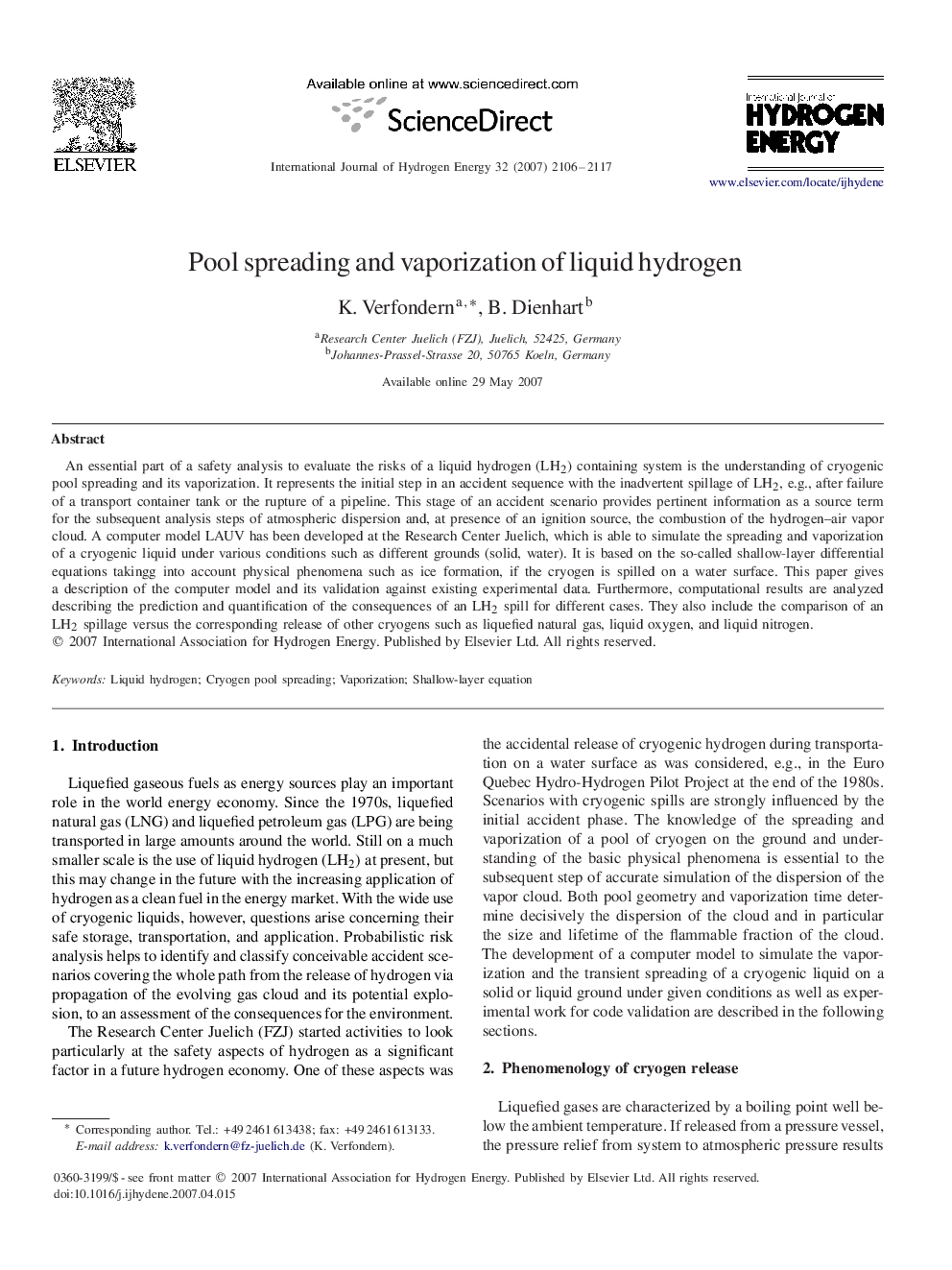| Article ID | Journal | Published Year | Pages | File Type |
|---|---|---|---|---|
| 1280310 | International Journal of Hydrogen Energy | 2007 | 12 Pages |
An essential part of a safety analysis to evaluate the risks of a liquid hydrogen (LH2)LH2) containing system is the understanding of cryogenic pool spreading and its vaporization. It represents the initial step in an accident sequence with the inadvertent spillage of LH2LH2, e.g., after failure of a transport container tank or the rupture of a pipeline. This stage of an accident scenario provides pertinent information as a source term for the subsequent analysis steps of atmospheric dispersion and, at presence of an ignition source, the combustion of the hydrogen–air vapor cloud. A computer model LAUV has been developed at the Research Center Juelich, which is able to simulate the spreading and vaporization of a cryogenic liquid under various conditions such as different grounds (solid, water). It is based on the so-called shallow-layer differential equations takingg into account physical phenomena such as ice formation, if the cryogen is spilled on a water surface. This paper gives a description of the computer model and its validation against existing experimental data. Furthermore, computational results are analyzed describing the prediction and quantification of the consequences of an LH2LH2 spill for different cases. They also include the comparison of an LH2LH2 spillage versus the corresponding release of other cryogens such as liquefied natural gas, liquid oxygen, and liquid nitrogen.
